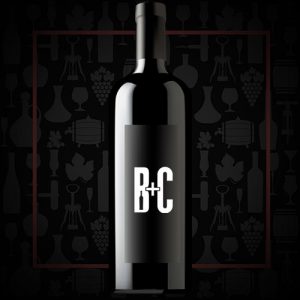Cellar Profile
Nestled along the Sèvre River, in the Nantes region of the Loire Valley, sits the village of Saint-Fiacre. This is Muscadet country and home to owner/winemaker Pierre-Henri Gadais’ exciting new winery, Domaine de la Combe. Gadais is one of the talented and driven new winemakers that is working hard to bring this storied region back to its former glory.The vineyard sits on the southern slopes of a valley carved out of metamorphic rock, with pebbly soil on top of layers of schist. The excellent drainage and steep slopes ensure that, despite the periodic heavy rainfalls in the region, the vines are forced to dig deep into the rocky soil to get water. Grapes are organically and sustainably grown and the estate was certified in organic agriculture in 2021. Gadais believes in minimal intervention in the cellar, utilizing indigenous yeasts and chill stabilizing to avoid malolactic fermentation. He also believes Melon de Bourgogne – the only grape variety he grows – should spend some time sitting on its lees and eschews new oak or barriques. Wines are produced in tiny lots and are some of the most complex Muscadet from the region.
Region
Muscadet sits in the Nantais region of the Loire Valley. Bordered by the foothills of the Mauges and Bocage Verdeen ranges, vineyards are frequently planted on the steep hillsides of the Sèvre and Maine Rivers. Sitting on the soil of the Massif Armoricain, its soils are primarily gneiss, schist and granite. There are crushed seashells and sand pockets leftover from retreating oceanic waters in many of the vineyards. Melon de Bourgogne, a white grape, is the only variety allowed in appellation-status bottlings. The wines are typically light- to medium bodied, with vibrant acidity.
Vineyard
This single-varietal Melon cuvée comes from a selection of grapes from a single plot called l’Infernale, a nickname it probably owes to its vertiginous slope. At the mouth of the iconic Sèvre and Maine Rivers, in the little village of Saint-Fiacre, the vineyard is planted in gneiss, which has a similar composition to granite. From old vines planted in 1967, sitting in the widely acclaimed lieu-dit of Pétière, the vines have an advantageous south-eastern exposure that allows them to enjoy full sun during the day. This is important, as the strong Atlantic winds moderate temperatures severely. Cool evenings are the norm during the growing season.
Varieties
Melon de Bourgogne is a crossing between Pinot Blanc and the little known Gouais Blanc variety. It was once prevalent in the vineyards of Burgundy (hence its name), until it was ordered to be destroyed by the Burgundians in the 18th century. By then it had a toehold in the Atlantic area of the Loire Valley around Nantes, where it became the dominant grape and the base for Muscadet. Typically high in acid, fresh and mineral driven, it typically does not take to new oak very well. Complexity is gained by spending time on its lees. The best examples can gain some stone fruit notes to go along with the characteristic citrus elements.
Winemaking
Grapes are picked by hand, from 70 year-old vines, and harvested at optimal maturity before being pressed and gravity fed into underground tank. The juice is protected by CO2, rather than sulphites, to allow fermentation by native yeast. This minimum intervention wine is aged according to the Nantes tradition: on its lees for 14 months in underground vats. Unfiltered, it is aged in bottle for an additional year before release.
Tasting Notes
Full and concentrated, with a delicious, rich combination of flinty minerality, apple and citrus. The old vine fruit adds incredible depth to this fresh, savoury wine. Drinking well now, but has the potential to age for up to 15 years, which is rare for a muscadet. Serve chilled as an aperitif or with freshly shucked oysters or grilled chicken breast.

 info@buyersandcellars.ca
www.buyersandcellars.ca
info@buyersandcellars.ca
www.buyersandcellars.ca